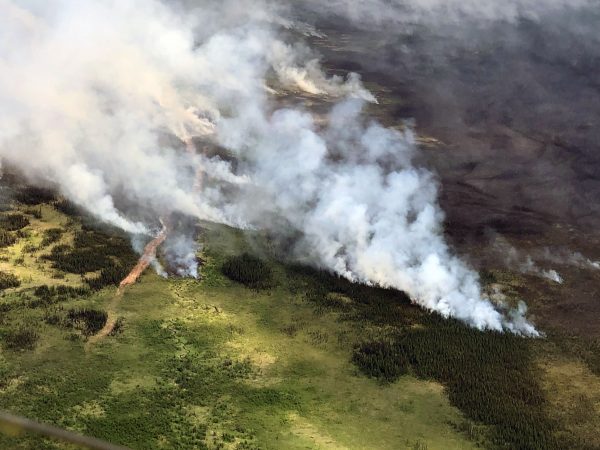
Climate change is having wide-ranging, visible impacts in Alaska. This summer, the state saw record-breaking heat and widespread drought.
With that dry heat came a long, destructive and expensive wildfire season. Further north, permafrost is thawing, and rain has become increasingly common in winter months.
Over the next four years, a collaborative research project aims to take a close look at these three natural hazards: wildfire, unstable permafrost and rain-in-winter events. They’ll examine how climate change is making communities even more vulnerable to these hazards, and the costs associated with them.
As climate change related hazards become more and more apparent, researchers are looking closely at what that means for urban communities in Alaska and the Yukon.
Jennifer Schmidt is an assistant professor of natural resources management at the University of Alaska. She’s heading up the four-year project, which looks to understand the costs and risks related to climate change, and what can be done to adapt.
Interview Highlights:
Project scope: “We want to look at these hazards in the Anchorage area, Fairbanks area and Whitehorse, Canada and see how they are changing,” Schmidt said. “So we’re going to assess them, look at how they might change in the future with climate change. And then also look at the adaptation and mitigation actions that communities are taking — both the local governments and also households, residents. And then we will also assess, what are the costs associated with these natural hazards … And then once we better understand the threat to these hazards and the risks from these hazards, then come up with maybe an adaptive policy framework for how can we go forward and maybe deal with these in the most cost-effective manner.”
What’s going to happen first?: “In the first year, our main goal is to put together these hazard maps,” Schmidt said. “There’s a difference between hazard and risk. Hazard is looking at the natural phenomenon and what is the hazard associated with it. You don’t really bring in the social aspects of it, such as, does a person live there, do we have infrastructure there? When you start bringing that in, that’s when you get risks. What’s the risk to people’s lives, what’s the risk to people’s property? And so we’d like to develop hazard maps for the wildfire risk, for the permafrost thaw, and the rain in winter events from 1980. And couple that with climate change scenarios to go out to 2060.”
Focus on particular risks: “I was involved in the Anchorage Climate Action Plan. I was the lead for the Urban Forestry and Watershed team. And the wildfire risk and the rain-in-winter risk came up during my conversations there,” Schmidt said. “And having lived in Fairbanks, I’m familiar with the interaction between wildfire risk and permafrost thaw.”
Integrating risks: “Our goal is not just to look at each of these things separately,” Schmidt said. “At first we have to, to kind of get a handle on it. But then we’re going to integrate them and look at the multiple-risk component. At least in Fairbanks, sometimes homeowners are faced with the choice of, ‘do I cut down the spruce trees around my house to reduce wildfire risk, but it might accelerate permafrost thaw and I’ll end up with holes all over my yard. So there’s that trade-off, what do I do? So we’re really excited to find out how people perceive these multiple risks and how they’re going to adapt to them?”




